Chapter: Business Science : International Business Management
International business environment - Political, Economic and Cultural environment
International business environment
The
environment of international business is regarded as the sum total of all the
external forces working upon the firm as it goes about its affairs in foreign
and domestic markets. The environment can be classified in terms of domestic,
foreign, and international spheres of impact.
The
domestic environment – is familiar to managers and consists of those
uncontrollable external forces that
affect the firm in its home market.
The
foreign environment - can be taken as those factors which operate in
those other countries within which
the MNC operates.
The
international environment - is conceived as the interaction between domestic
and foreign factors and indeed they
cover a wide spectrum of forces
The forces:
Political
environment Legal environment
Cultural
environment
Technological
environment Economic environment.
1 Political environment
It refers
to the influence of the system of government and judiciary in a nation on
international business. The type and structure of government prevailing in a
country decides, promotes, fosters, encourages, shelters, directs, and controls
the business of that country.
A
political system is stable, honest, efficient, and dynamic and which ensures
political participation to the people and assures personal security to the
citizens, is a primary factor for economic development.
Democracy: refers to a political arrangement
in which the supreme power is vested in the
people. Democracies maintain stable business environments primarily through
laws protecting individual property rights. Ex: India.
Merits of democracy:
Need for supportive values
Function of free speech
Classification of political risks
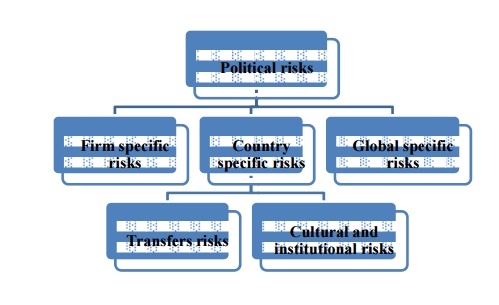
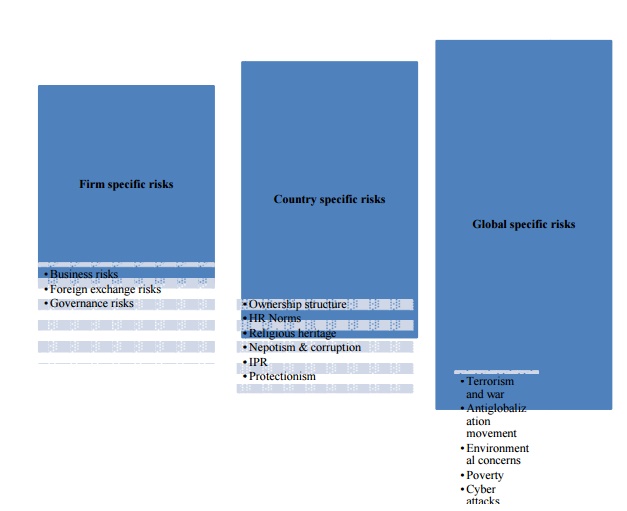
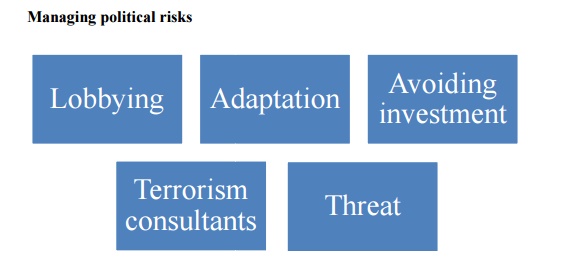
Legal environment
The legal
system refers to the rules and laws that regulate behavior of individuals and
organization
Systems of law:
There are
four basic legal systems prevailing around the world.
Islamic
law: derived from the interpretation of the Quran and practiced in countries where Muslims are in majority. Ex:
Saudi Arabia, Pakistan, Iran.
Common
law: derived from English law, is prevalent in countries, which were under British influence. Ex: US, Canada,
England, Australia.
Civil law
or code law: derived from Roman law, practiced in Germany,
Japan, France, and non - Marxist and
non - Islamic countries. Ex: Germany, France, Japan.
Marxist
legal system: This has takers in communist countries. Ex: China,
Vietnam, North Korea and Cuba.
Industrial disputes resolution: Legal
disputes can arise in three situations: between governments, between a firm and a government, and between two
firms.
Conciliation: also known as mediation, this is
a nonbonding agreement between parties to
resolve disputes by asking a third party to mediate.
Arbitration: is the preferred method for
resolving international commercial disputes. The usual arbitration procedure is for the parties involved to select a
disinterested and informed party or parties as referee to determine the merits
of the case and make a judgment that both parties agree to honor.
Litigation: a wise course of action would be
to seek a settlement other than by suing.
2 Cultural environment:
According
to Elbert W Steward and James A Glynn “Culture consists the thought and
behavioral patterns that members of a society learn through language and other
forms of symbolic interaction – their customs, habits, beliefs and values, the
common viewpoints that bind them together as a social entity.
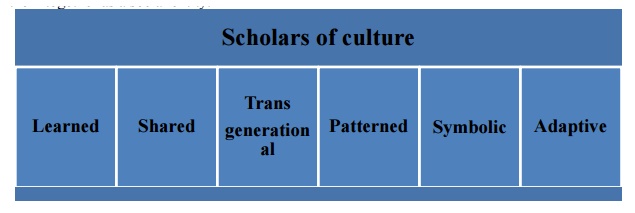
Levels of culture:
1. National culture:
It is dominant
culture within the political boundaries of a country.
2. Business culture:
It also
provides the guides for everyday business interactions.
3. Occupational and organizational cultures:
It’s
sister term is corporate culture refers to the philosophies, ideologies,
values, assumptions, beliefs, expectations, attitudes and norms that knit an
organization together and are shared by its employees
4. Mechanistic and organic cultures:
It
exhibits the values of bureaucracy and feudalism.
5. Authoritarian and participative cultures:
Power is
concentrated on the leader and obedience to orders and disciplines are
stressed. Participative cultures tend to emerge where most organizational
members are professionals or see themselves as equals.
6. Dominant and sub-cultures:
Dominant
culture, normally referred to as the organizational culture reflects core
values that are shared by the majority of the employees. By contrast,
sub-cultures are found in departments, divisions and geographical areas and reflect
the common problems or experiences of employees who reside in these areas.
7. Strong, Weak and Unhealthy cultures:
A Strong culture will have a significant
influence on employee behavior manifesting in reduced turnover, lower
absenteeism, increased cohesiveness, and positive attitudes.
A Weak culture is characterized by the
presence of several sub-cultures, sharing of few values and behavioral norms by
employees and existence of few sacred traditions.
One Unhealthy culture is a politicized
internal environment that allows influential manager to operate autonomous
“fiefdoms” and resist needed change.
Elements of culture
Language
Customs and manners
Attitudes
Aesthetics
Religion
Education
Supernatural beliefs
Implications for international business
Multiculturalism:
Managing
multiculturalism is essential for every international firm.
Spread cross-cultural literacy
Compatibility between strategy and culture
Culture and competitive advantage
Managing diversity.
IMPACT OF TECHNOLOGY:
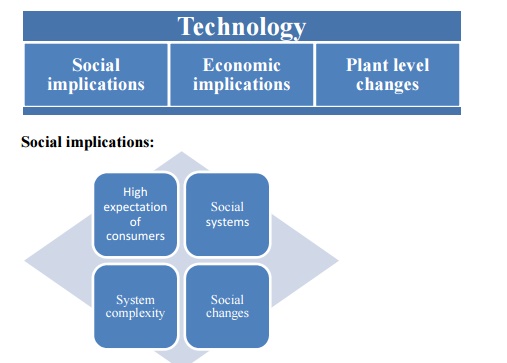
Economic implications:
Increased productivity Need to spend on R&D
Jobs become intellectual
Problems
of techno-structure
Increased
regulation and stiff opposition
Rise and
decline of products and organizations Boundaries redefined
Training
of scientists and engineers.
Plant level changes:
Organization
structure Resistance to change Fear of risk
E-commerce
Patenting
Transportation
Markets
Technology
transfers Production
Others
Operational sequences for technology transfer
Arrangements
for sales & licensing
Provision
of know-how & technical expertise
Provision
of detailed engineering designs & installation Purchases and leases of
technology elements
Technical
cooperation agreements
3 ECONOMIC ENVIRONMENT:
It can
help international managers, to predict how trends and events might affect
performance of foreign business.
Classification
on the basis of income:
Developing
countries: share a set of common and well – defined goals. Ex:
India, China.
Developed
countries: Those are highly industrialized, highly efficient.
Ex: Canada, Japan, Australia, US.
Countries
classified by economic system:
Market
economy: production of goods and services is not planned by individuals
Command
economy: decisions relating to all economic activities – what to produce, how to produce.
Mixed
economy: it includes both. Ex: India.
III) Classification of countries by region:
East Asia and Pacific
Europe and central Asia
Latin America and the Caribbean
Middle east and North Africa
South Asia
Sub-Saharan Africa
High income countries
IV) Economic scenario:
Rates of growth
Inflation
Savings and investment
Fiscal stability
Balance of payments
Financial system
Economic
policies:
Industrial policy
Monetary policy
Fiscal policy
Trade policy
Related Topics